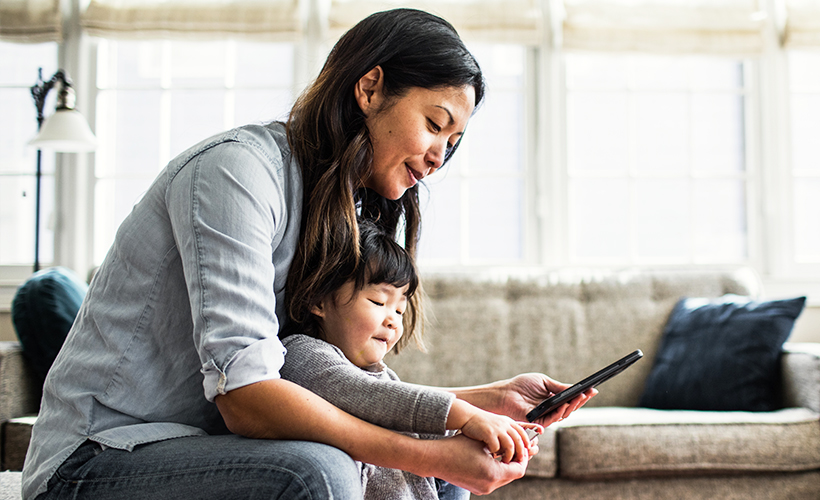Links to various Aetna Better Health and non-Aetna Better Health sites are provided for your convenience. Aetna Better Health is not responsible or liable for non-Aetna Better Health content accuracy or privacy practices of linked sites or for products or services described on these sites.
Using telemedicine during the COVID-19 pandemic
 By Kira Garcia
By Kira Garcia

In the last few months, people around the world have adjusted to life without restaurants, parties and sporting events. And while we may be missing the trip to the theater for a summer blockbuster movie, trips to the doctor cannot be avoided. Or can they? With telemedicine, many services are available at home to keep you healthy.
Telemedicine simply means visiting your doctor via a video or phone call. Kristen Hancock, a family nurse practitioner who works with Medicaid and Medicare patients, now sees many of them using telemedicine. “We transitioned over the course of one week, so we went from 100% in-clinic to about 75% telemedicine in a week. People adapted quickly,” she says. Hancock and her patients appreciate the efficiency and the fact that health care isn’t put on hold.
Wondering how to use telemedicine? Here are answers to a few common questions:
What do I need to know before my first telemedicine appointment?
There are a few things to keep in mind. “First,” Hancock says, “treat it as you would a regular doctor’s appointment and try to be on time. Also, remember to be in a quiet, well-lit place so your provider can see and hear you clearly.” Write down any questions in advance so you will remember to ask.
Can telemedicine be used for any health care need?
For most common health care needs, yes! Telemedicine works for issues like cold symptoms and skin problems, as well as mental health care, nutritional coaching and more. Hancock says that “it’s great for medication checks, anxiety and depression, well visits and lots of other needs. When we have to answer questions like ‘Is this chest pain from coughing?’ we may need to see you in person. But the provider will decide if that’s necessary.”
Can children use telemedicine?
Most times, yes. Hancock says that “some things just don’t work — if a 5-year-old has ear pain, that could be an ear infection or a jelly bean in the ear!” Be flexible because you may still have to be seen in person.
It is also critical to keep kids up to date on vaccinations, which need to be given in person. “We’re seeing a reduction in routine well-child visits,” Hancock says. This can be dangerous, she adds, because “it’s important that we don’t create opportunity for another pandemic.” If your child is due for a visit, contact your provider and ask what they recommend.
Is the technology hard to use?
Hancock’s clinic uses a smartphone app. She says, “I’ve had people of every generation figure it out. People who have never downloaded an app before are making it work, and we have a moment of celebration, saying ‘Yay, you figured it out!’ For those who do not have smartphones, friends or family members often loan theirs.”
What if I need an interpreter?
Many clinics are now using telemedicine translation services to make sure everyone can get care. Providers at Hancock’s clinic now do three-way telemedicine that includes a translator, so the care is available to everyone, no matter their language. Call ahead to find out what your clinic offers before your appointment.
Do not let the pandemic put your health care needs on pause. Visit Aetna Better Health® for tips on how to keep working toward your health goals, and check with your health care plan about how to access telemedicine. With a little help from technology, you can talk with your provider anywhere.
About the author
Kira Garcia is a writer living in Brooklyn, New York. Her work has been published in the New Yorker, New York Magazine, Bon Appetit and elsewhere. She has also created text and marketing strategies for cultural and social service nonprofits.
Related content
Not yet a member?
See if Aetna Better Health® Medicaid coverage is available in your state.
Already a member?
Visit your member portal for info about your plan.
See if Aetna Better Health® Medicaid coverage is available in your state.
Already a member?
Visit your member portal for info about your plan.
